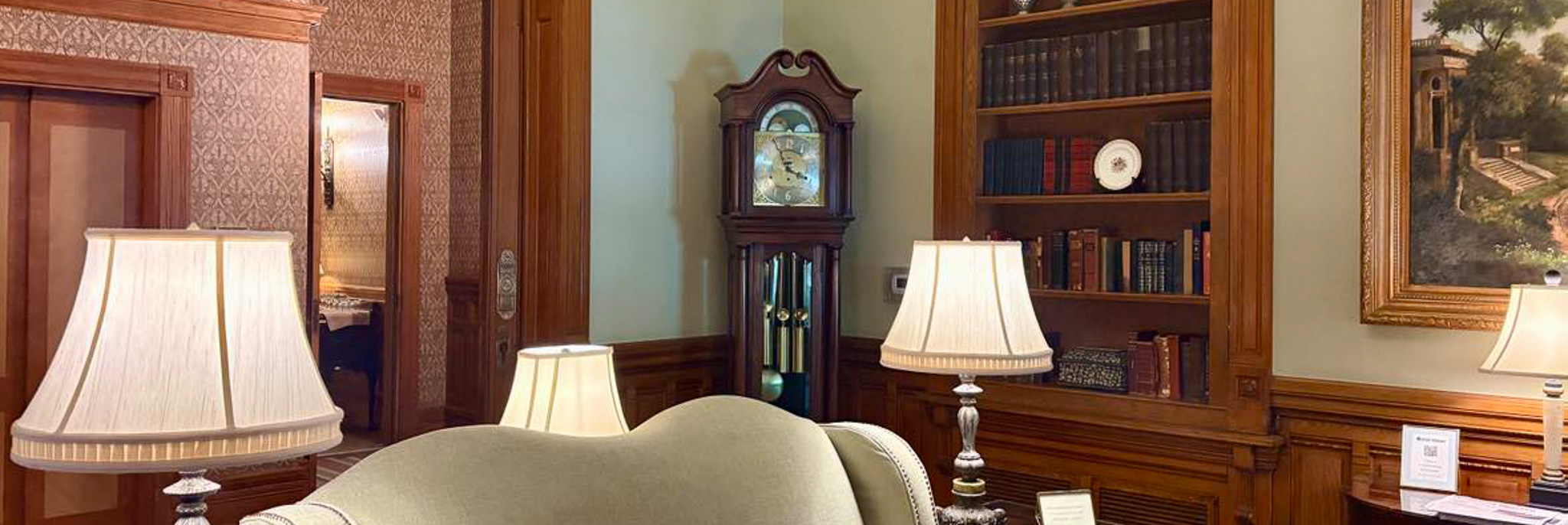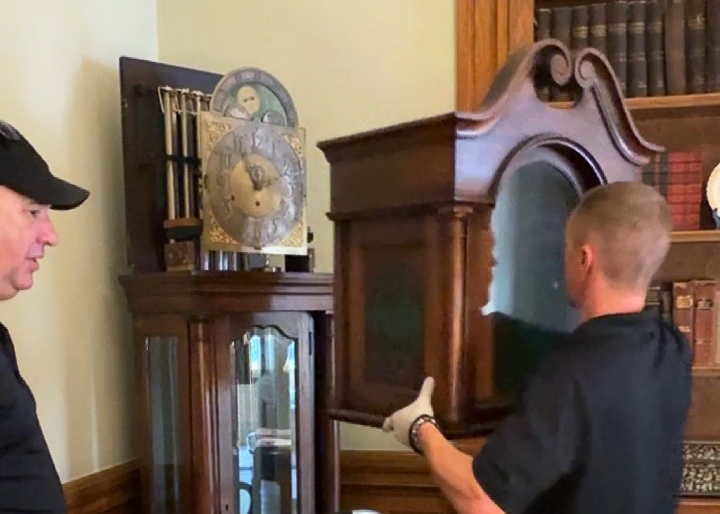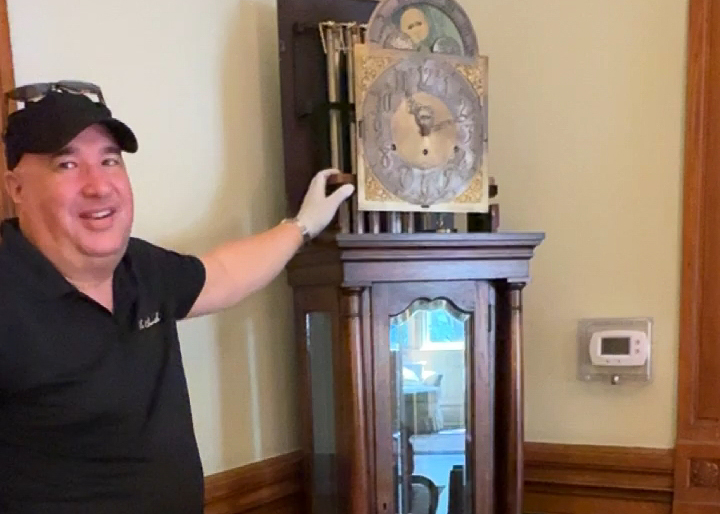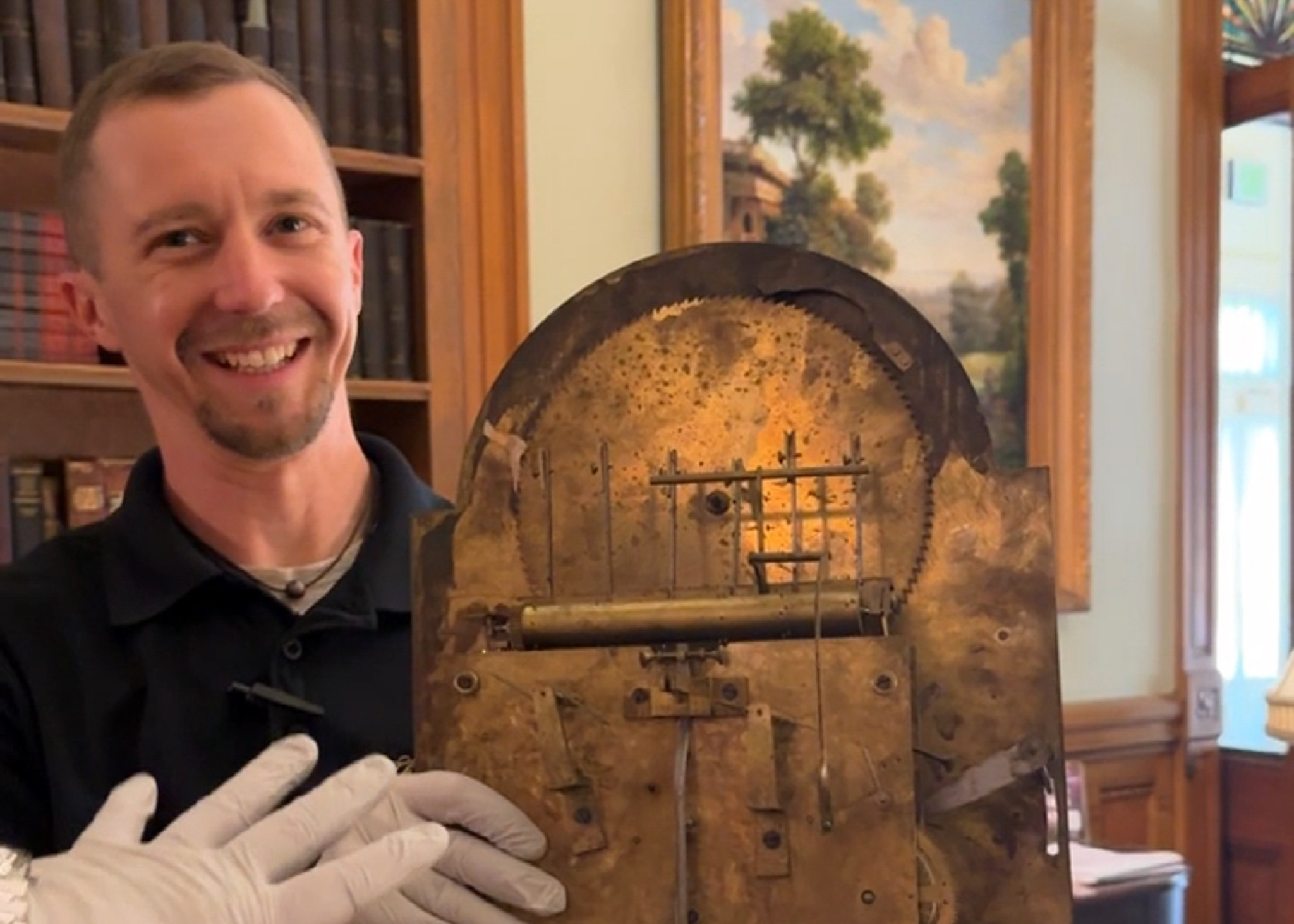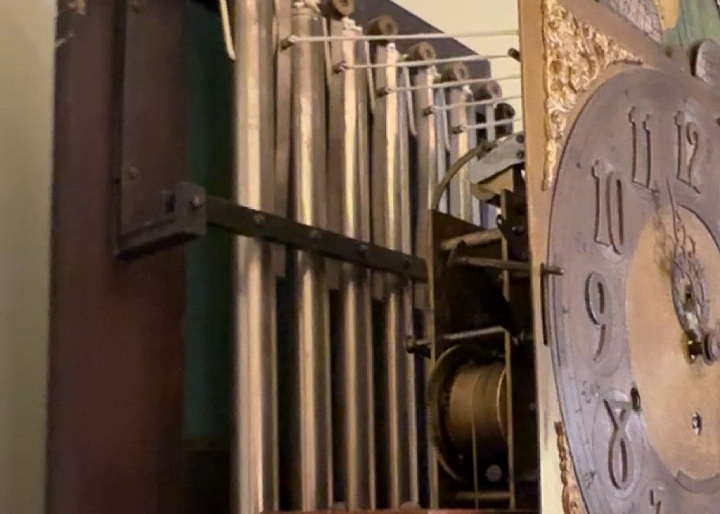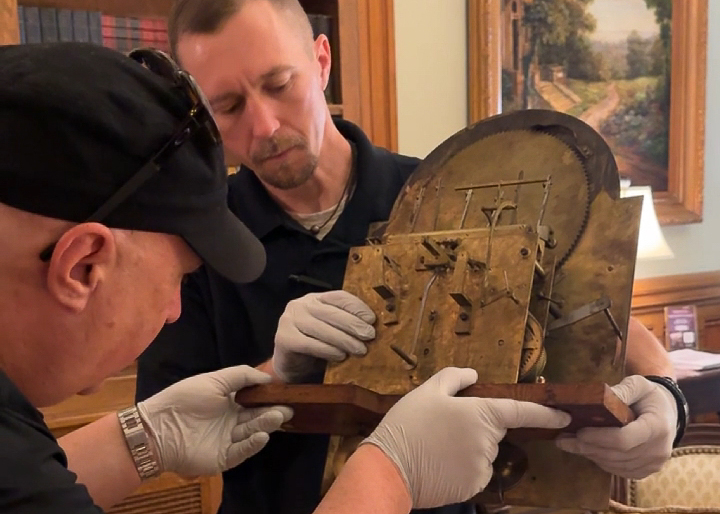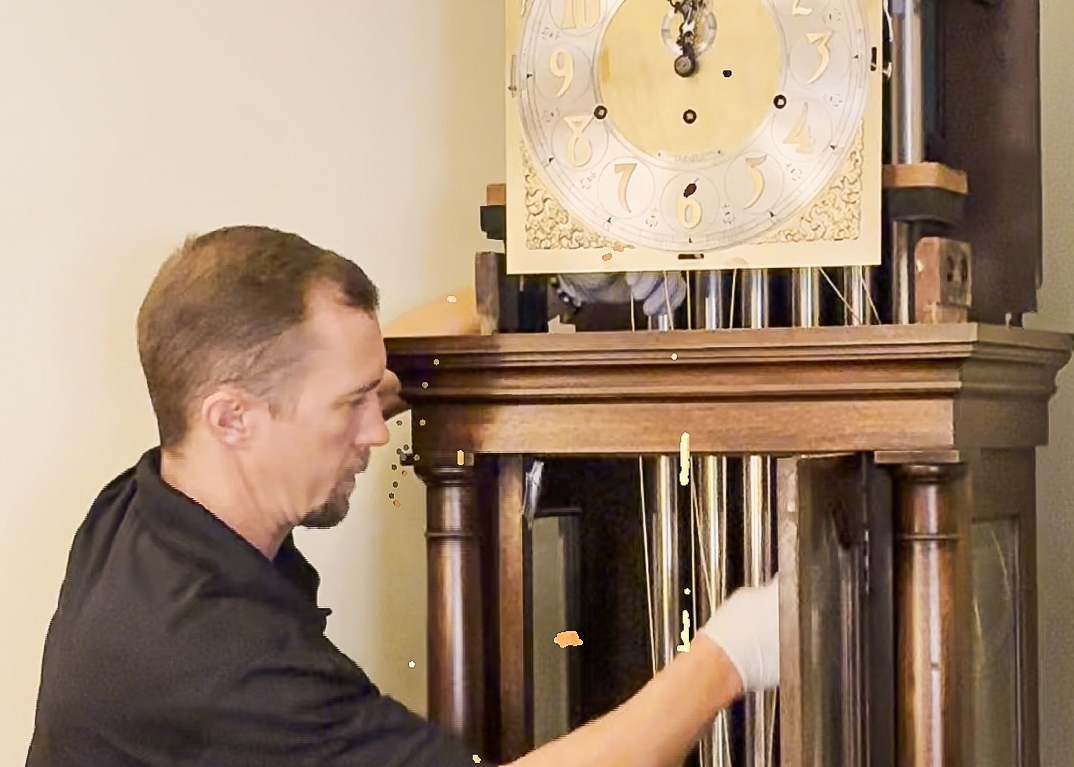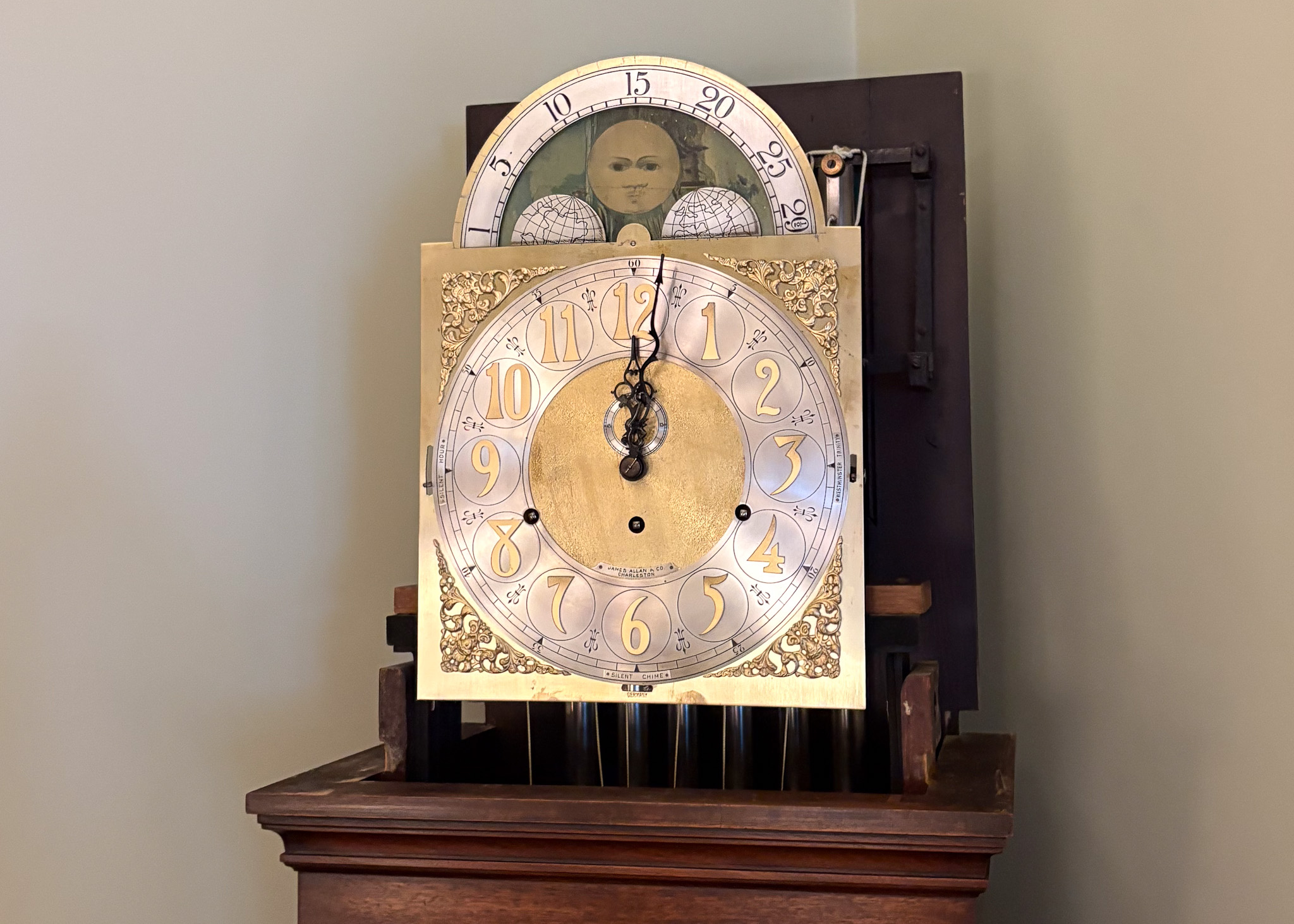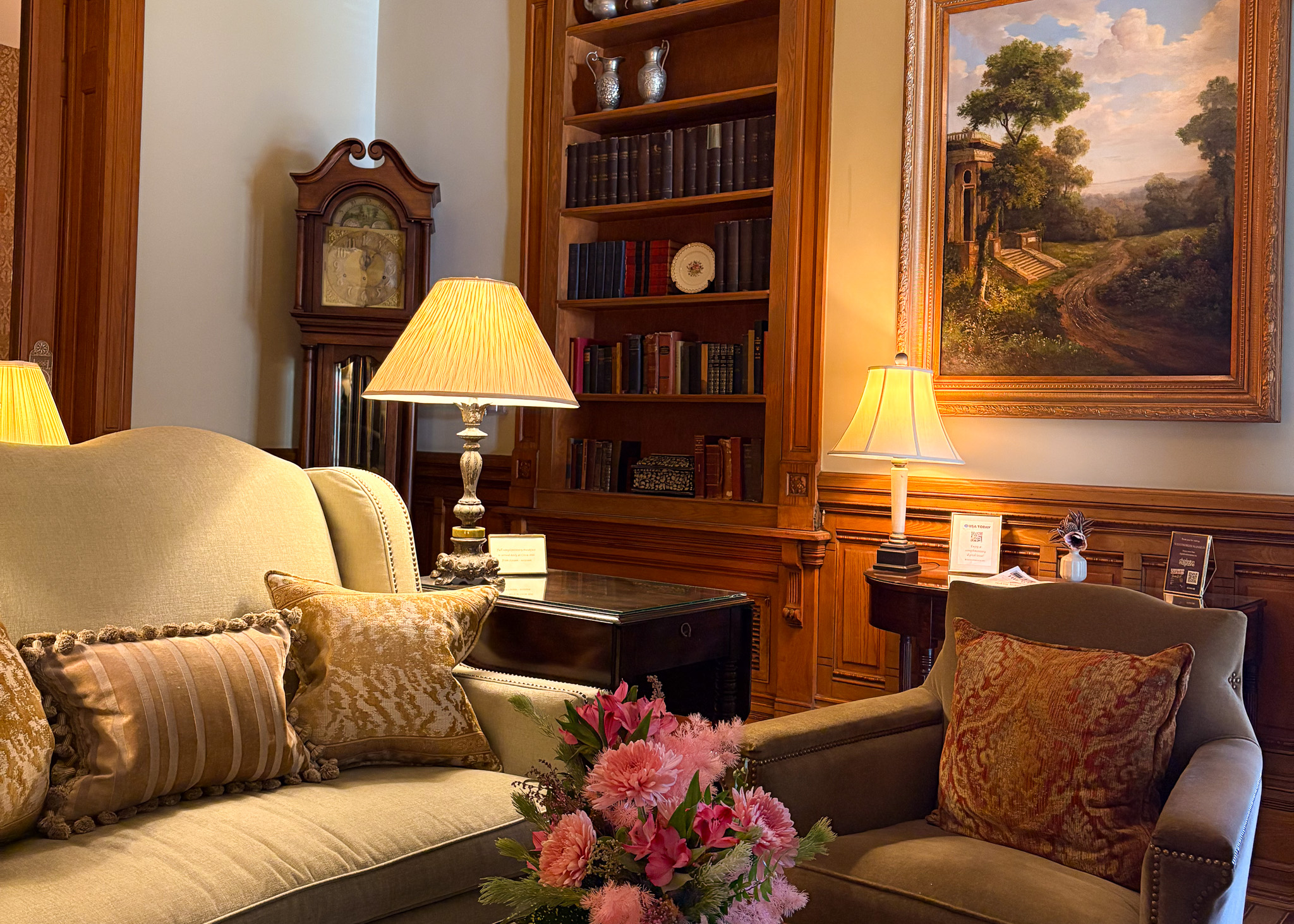At Wentworth Mansion®, history doesn’t just live in the walls—it ticks, chimes, and quietly marks the passage of time. Nestled in the heart of the mansion’s parlor is a century-old grandfather clock, a piece as storied as the building itself. When it came time to restore this treasured timepiece, we turned to master clocksmith Bryan Smith, whose passion and expertise made him the perfect steward for the project. What followed was not just a restoration, but a revival of craftsmanship, legacy, and Charleston history.
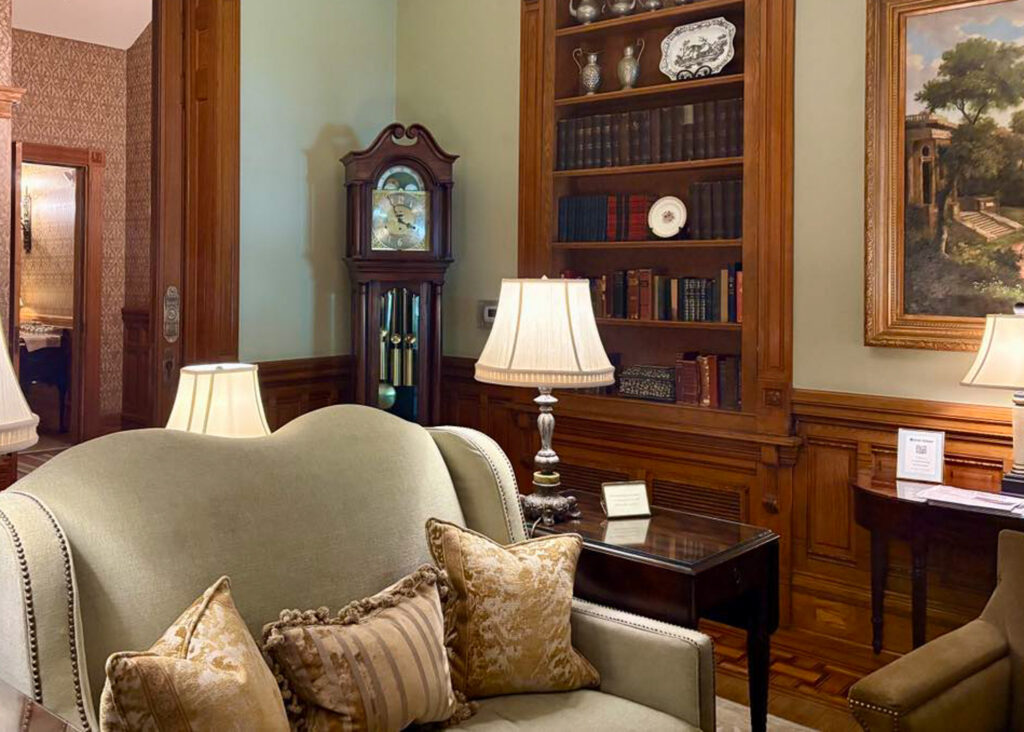
Time to Call the Experts
When master clocksmith Bryan Smith stepped into Wentworth Mansion® to begin work on the property's historic grandfather clock, he already had a sense that the project would be something special. The restoration began with the dial, which had significantly darkened over time. “It was hard to see the numbers,” Smith explained. “Everything kind of blended together. Once we were done, you could read it clearly from across the room.”
In addition to restoring the dial’s surface, Smith and his colleague Dustin Harlow reworked the numerals to ensure they were crisp and legible. “We wanted the clock to be beautiful, but also functional again—just as it was originally intended,” he said.
The clock’s dial, made of brass, was originally silvered using a process called silver salting, a nearly 300-year-old method. “What we did was bring that silver finish back to life,” Smith said. “It’s kind of like re-silvering old photographs, but with a slightly different technique.”
A Connection to Charleston's Past
The clock itself has a local pedigree. It was originally sold by James Allan & Co., a jewelry and clock shop in Charleston. Based on Smith’s estimates, the clock dates from around 1915.
Interestingly, while the case was likely made in America, the internal movement, dial, weights, and chime tubes were probably imported from Germany, a common practice at the time. “Once the components arrived,” Smith said, “shops like James Allan would assemble them and add their own names, almost like a signature of craftsmanship.”
A Working Moondial
Another feature Smith restored was the moondial, which tracks the lunar cycle. “When it’s working properly, it shows the current phase of the moon,” he explained. “People used it for all kinds of reasons—navigation, agriculture, even planning safe travel at night on unlit roads.”
Moondials were especially useful to people living along coastlines, as new and full moons can cause more extreme tides. “They really were the computers of their time,” Smith added. “And only the wealthy could afford a clock like this.”
About the Clocksmith
Bryan isn’t just passionate about clocks; he comes from a long line of horologists. “I’m fourth-generation,” he said. “My great-grandfather got me into this. I didn’t think much about clocks from age 10 to 18, but when I was older and thinking about a career, it all came back.”
Smith shared a defining moment from his youth. While visiting a friend in London after high school, he wandered into a small watch shop and asked if there were any clock shops nearby. The shopkeeper directed him to Roderick Antiques, a two-story store filled with timepieces. “It was like a museum,” Smith recalled. “I stayed for two and a half hours.”
Before he left, the owner, Mr. Roderick, struck up a conversation and told him, “You’re going to be a horologist one day.” Without knowing Smith’s family background, the comment felt almost prophetic. Mr. Roderick advised him not to study in the U.S.—joking that “they’re all hacks”—and said to call him when he knew it was his calling.
After his first year of college, Smith did just that. When Mr. Roderick answered the phone, he simply said, “What took you so long?” From that point on, Smith returned to London every summer to apprentice with him.
“I still love clocks,” Smith said. “Thirty-four years later, it still doesn’t feel like a job.”
The Clock Returns to Wentworth Mansion®
After several weeks of careful restoration, the grandfather clock was returned to its rightful place at Wentworth Mansion. The freshly silvered dial and moon phase indicator were delicately reinstalled, and the weights were rehung with expert precision. Following testing and winding, the clock once again chimed on the half and full hour, marking time for guests and quietly tracking the moon’s phases, just as it had more than a century ago.


